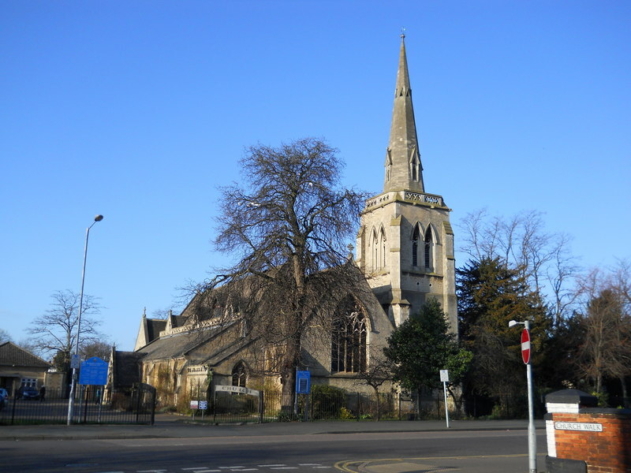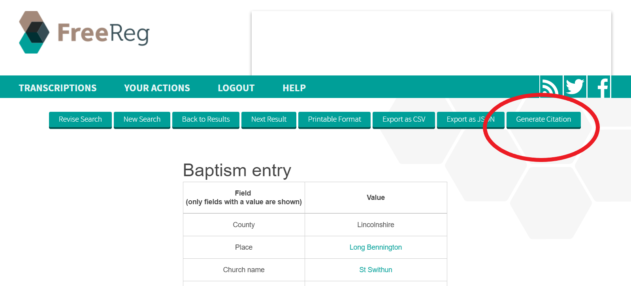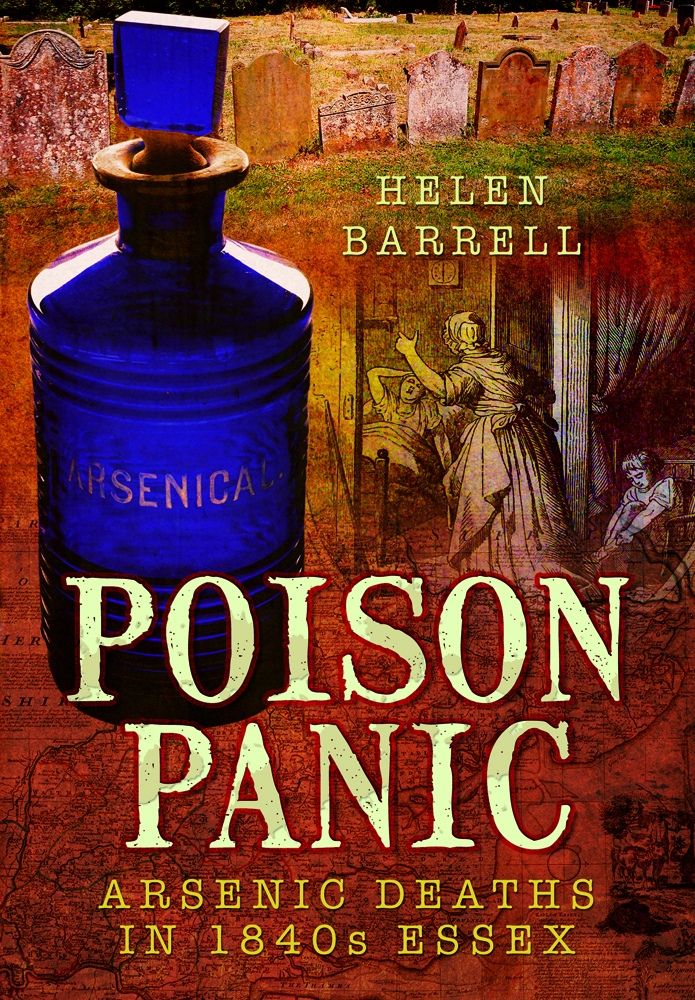We're pleased to host another guest post by author and FreeREG transcriber Helen Barrell, who will feature on BBC One's Murder, Mystery and My Family this Wednesday (3rd April) at 09.15am.
Here, Helen describes the usefulness of parish registers in researching the subject of her books, and the case of Sarah Chesham, who she believes suffered an unfair outcome in her trial.
The cover of Helen's book: Poison Panic.
Some years ago, I was researching a branch of my family who lived in Acton in Suffolk. I discovered a great-several times uncle called Mordecai Simpson who, it turned out, had been drawn into an arsenic poisoning which led to the hanging of a 17-year-old.
This was the rather sad case of Catherine Foster, who was convicted of murdering her husband. The crime only came to light when Mordecai, who lived next door to Catherine, noticed his chickens dying. It turned out they’d eaten leftovers from the arsenic-laced dumpling that Catherine had fed to her husband. She was hanged in 1847.
While transcribing the parish registers for Wix in Essex, I stumbled over another arsenic case – when Mary May was found guilty of poisoning her half-brother Spratty Watts (also known as William Constable). Mary was hanged in 1848, and the more I looked, the more cases of arsenic poisonings I found cropping up in the newspapers around that time.
And one of the other cases was that of Sarah Chesham, who stood trial no less than three times for poisoning in 1847 and once again in 1851. Just after that final trial, when Sarah was condemned to death, an act was passed which restricted the sale of arsenic. Up until then, it was as easy to buy as an any innocent grocery, but after the act was passed, arsenic could only be purchased if the customer signed or marked the poisons register. In later years, many other poisons were added to the restricted list, including strychnine and cyanide. If you’re an avid reader of Golden Age crime fiction, you’ll have come across poisons registers in murder mysteries.
But these stories are no fictions – real people died of arsenic poisonings, and real people were hanged in front of crowds of thousands of people. I was curious about the impact of the cases on the people involves and their communities and so set about researching them in detail. In 2016, Poison Panic, my book about the cluster of poisonings in Essex was published, and in 2017, Fatal Evidence, the biography of Alfred Swaine Taylor – the toxicologist who worked on nearly all the cases in Poison Panic, as well as famous nineteenth-century trials like that of William Palmer – came out.
Alfred Swaine Taylor giving evidence at an inquest
Last year I was contacted by the makers of BBC1’s award-winning series Murder, Mystery and My Family. Sarah Chesham was to be the subject of one of the episodes, and they asked me for my help.
I was really glad to be involved as I’m not convinced that Sarah Chesham had a fair trial in 1851. Unfortunately, I don’t think it’s what the law would define as an “unfair trial”, because as things were in 1851, the judge presiding over the case and who sentenced her to death after she was convicted of attempted murder, had not technically done anything wrong. It’s just that morally it doesn’t seem right as the Offences Against the Person Act, under which she was tried, doesn’t include execution as a possible sentence – life imprisonment or transportation for life are the stiffest sentences possible. However, judges were allowed to sentence as they saw fit, and Campbell, the judge, decided that Sarah was guilty of the charges she’d been acquitted of in 1847 as well.
Sarah had no defence counsel, and the press had been printing lurid nonsense about her too – with no money of her own, no solicitor to raise a petition, and with no Appeal Court (which wouldn’t exist until 1875) to challenge Campbell’s sentence, Sarah Chesham was hanged.
Parish registers were incredibly useful for my research – not only did they inspire me in the first place to find out more about the arsenic poisonings afoot at the time, but they also helped me to reconstruct the families of those involved. In the case of Mary May, the registers were useful for finding out if the newspapers were correct when they claimed she’d had sixteen children and murdered them all – it will come as little surprise to learn that this wasn’t true at all. Over-the-top gossip surrounding the arsenic poisonings cases made their way into newspapers unchecked and were repeated and exaggerated as the stories spread.
Parish registers offer us an insight into ordinary people’s lives – and when those people become part of extraordinary events, those registers can give us the facts that overblown, tub-thumping newspaper editorial of the past distorts. And so it’s fitting we filmed a scene in Clavering’s churchyard, where the very vicar who recorded Sarah Chesham’s family in his parish’s registers once stood.
Helen Barrell, FreeREG Transcriber and Author of Poison Panic in Clavering, Essex.
The second series of Murder, Mystery and My Family is being broadcast on BBC1 from 25th March to 5th April. The episode about Sarah Chesham airs on Wednesday 3rd April.
Helen Barrell’s books Poison Panic and Fatal Evidence are published by Pen & Sword and available from all good bookshops.
Transcriptions for Acton, Clavering and Wix can be found on FreeREG.








